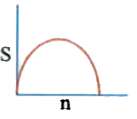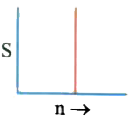During the Doppler principle, as apparent frequency increases louder is heard because
The correct Answer is:D
Topper's Solved these Questions
Similar Questions
(A): When an observer moves towards a stationary source, the frequency of sound heard is greater than the actual frequency
(R) : Apparent frequency increases because the observer intercepts more number of waves when he moves towards the source.
View SolutionIn discussing Doppler effect, we use the word "apparent frequency". Does it mean that the frequency of the sound is still that of the source and it is some physiological phenomenon in the listener's ear that gives rise to Doppler effect ? Think for the observer approaching the source and for the source approaching the observer.
View Solution
Knowledge Check
Apparent frequency will increase if
ASource is at rest, listener is moving towards source.BSource and listener are moving towards each other.CSource is moving towards listener at rest.DSource and listener are moving in same direction and with same velocityThe graph between distance between source and observer and apparent frequency in the case of Doppler's effect will be
A B
B C
C D
D
A passenger is sitting in a fast moving train The engine of the train below a whistle of frequency 'n' .If the apparent frequency of sound heard by the passenger is 'n' then
An'<nBnt>nCn'=nDn'≥n
Is it possible that the apparent frequency of the sound heard by a moving listener is the same as the true frequency ? If so give an example,
View SolutionIf the temperature of the wire in a sonometer is increased what happens to the frequency of the sound heard?
View SolutionIf a source emitting waves of frequency f moves towards an observer with a velocity v4 and the observer moves away from the source with a velocity v6, the apparent frequency as heard by the observer will be (v=velocity of sound)
View SolutionAlcohol increases the frequency of urination because
View SolutionIf an observer is moving with uniform velocity v to wards a stationary source of frequency n, and if the velocity of sound in the medium is V, then the apparent change in the frequency of the sound, heard by the observer, is -
View Solution
